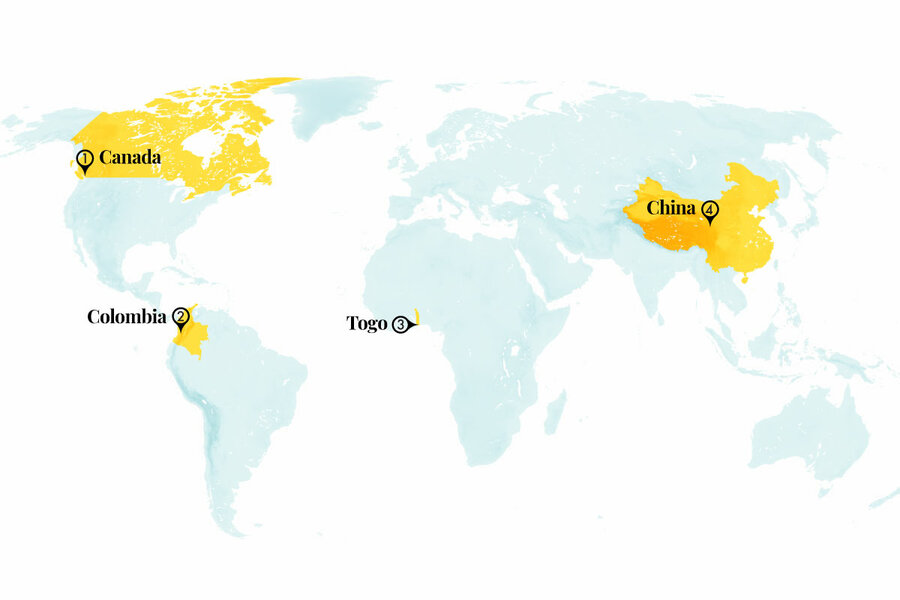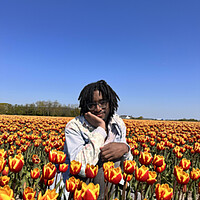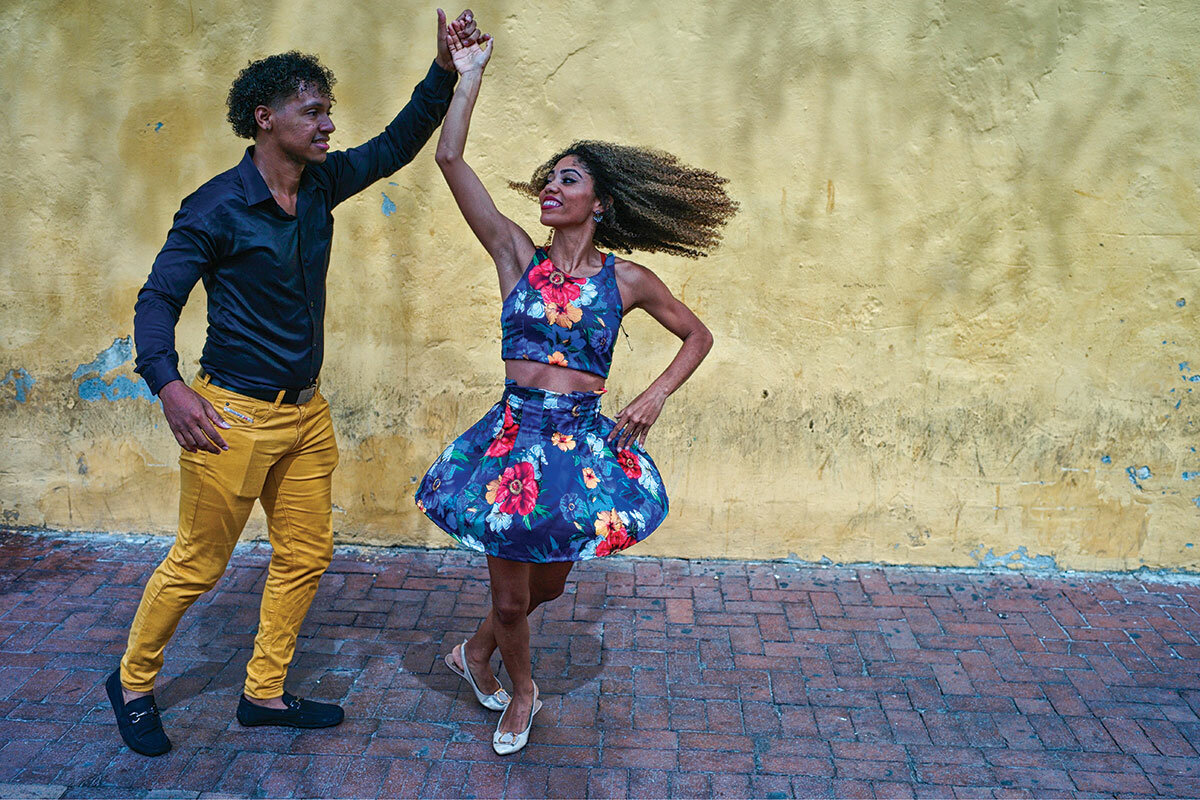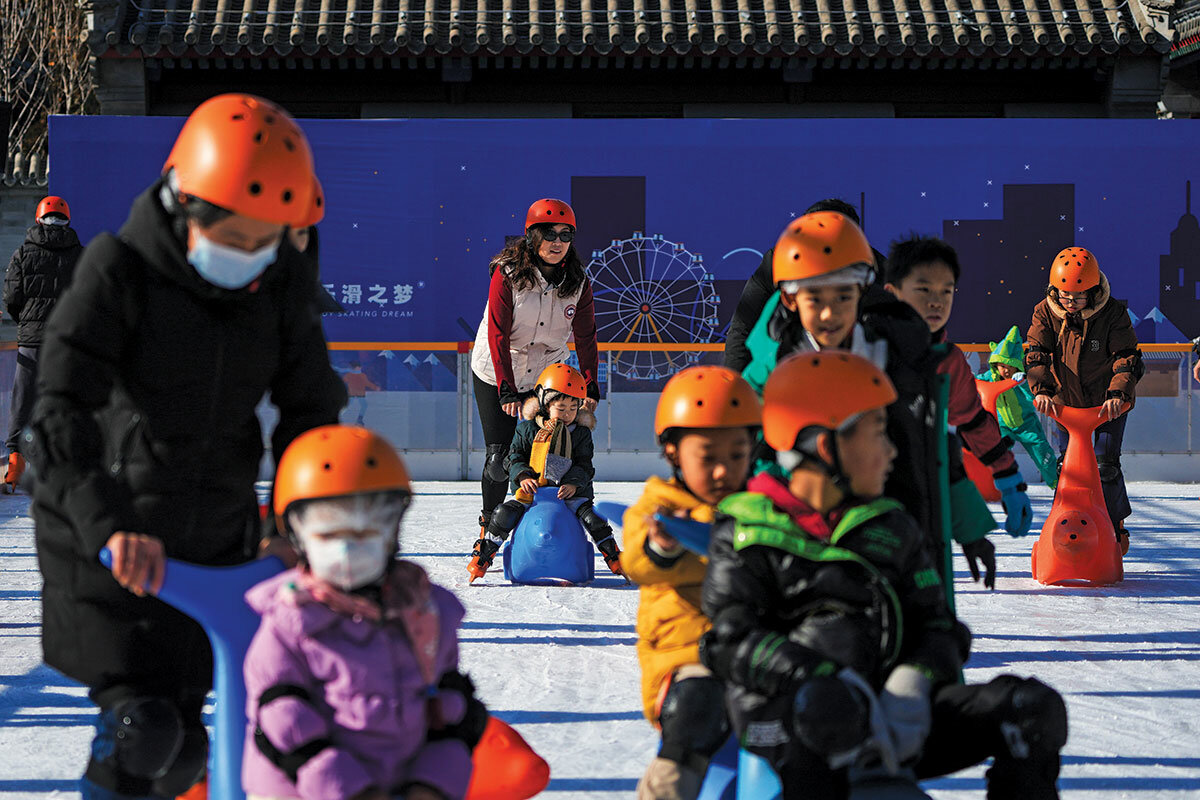In schools and on dance floors, building inner resilience
Loading...
1. Canada
A Vancouver neighborhood is harnessing heat from wastewater to sustainably warm buildings. When water from a hot shower or laundry cycle washes down the drain, its excess energy often goes to waste. In the community of False Creek, a heat pump system extracts heat from wastewater and concentrates it to produce scalding hot water.
The heated water is channeled back through a thermal grid of pipes, providing heat for buildings and 6,210 apartments, including the former Olympic Village. The False Creek Neighbourhood Energy Utility was the first in North America to recover heat from untreated sewage, and the latest expansion will triple current capacity to 9.8 megawatts. In Edmonton, Alberta, a 6.6-megawatt facility that won a design award is under construction.
Why We Wrote This
In our progress roundup, both physical movement and mental exercises are helping people heal and flourish. In Colombia, salsa dancers are coping with gender violence. And around the world, children are cultivating an inner strength.
While wastewater treatment plants account for up to 40% of cities’ electricity bills according to U.S. government estimates, wastewater recovery could transform these facilities into energy producers instead of consumers. A handful of states have passed laws requiring gas utilities to pilot thermal energy networks, using the existing infrastructure of shared systems of pipes between buildings to transfer heat.
Sources: BBC, Canadian Architect, Canary Media
2. Colombia
Dancing the salsa is helping survivors of sexual violence to heal. Globally, about one-third of women have faced physical or sexual violence from a partner. But through the nonprofit Mi Cuerpo Es Mi Historia (My Body Is My Story), some 700 girls and adolescents have found dance to be part of their recovery.
Psychologist and dancer Martha Isabel Cordoba Arevalo founded the organization in 2014, using the performing arts to aid children vulnerable to violence. In the city of Cali, known as the capital of salsa, the program blends psychotherapy with movement to help participants process their emotions. To lower the chance of re-traumatizing individuals, dance partners do not touch and instead mirror each other’s moves.
Last fall, Colombia’s peace tribunal, formed after six decades of armed conflict, deepened its investigation into gender-based violence as a weapon of war. Officials had recorded 35,178 people who suffered gender violence between 1957 and 2016.
While dance has long been practiced as a healing art, qualitative and quantitative research on dance movement therapy and interventions is increasing. A 2019 meta-analysis of 41 studies found that dance therapy could reduce rates of depression and anxiety.
“I had negative thoughts in the past,” said Sofia Murillo, a graduate of the program. “But when I’m dancing, it’s different. I forget everything. I smile.”
Sources: Al Jazeera, Frontiers in Psychology
3. Togo
Togo is reclaiming its heritage with an art park located in a former colonial residence. The Palais de Lomé – a sprawling, nearly 120-year-old complex in the country’s capital – was home to German and French colonial governors. Abandoned by the Togolese prime minister in the 1990s, the building was converted into the nation’s first major arts center in 2019. The opening marked the first time the building had ever been accessible to the public.
The complex is home to a number of attractions, including exhibitions, a library, an 11-hectare (27-acre) botanical garden, and an auditorium. The center opened with five exhibitions on Pan-Africanism and Togo’s history, paying tribute to Togolese artists and displaying rarely seen artifacts from the traditional communities of Togo. In addition to shows, the center collaborates with Togolese tradespeople and artisans in an effort to highlight their importance to society. Labels in the museum are in English, French, and the locally common Ewe.
Though it was initially met with some skepticism, the arts center has become a major draw for tourism. One traveling exhibit titled “From Coast to Coast: Seke” was organized by the African Artists Foundation and features more than 160 works in differing media. Focused on the effects of colonialism in Africa, the show connects Ewe speakers of West Africa, including those in Ghana and Benin.
Sources: ARTnews, The Art Newspaper
4. China
China is re-imagining its shopping malls. Malls boomed between 1990 and 2020, seeking to match demand from an emerging middle class eager to assert its purchasing power. But after more than three decades of economic expansion, the COVID-19 pandemic and the rise of online shopping have forced many physical retailers to close.
Yet the extra space is yielding new uses, from children’s playgrounds to gyms and yoga studios. At Raffles City Mall in Shenzhen, visitors can find a rooftop playground for pets, an area for art exhibitions, and a stage. Ski lessons, ice mazes, and tubing have become attractions at the Dream Time Mall in Wuhan, and other malls feature art museums, dance studios, paddling pools, cooking classes, skating rinks, and more.
For years, China discouraged unregulated small merchants. But during the pandemic, the informal economy began to be seen as a way to achieve social distancing and combat unemployment. Vendors are becoming part of the remaking of China’s shopping centers, selling street food, produce, and crafts in parking lots and the open spaces around malls.
Sources: The Conversation, China Daily
World
Teaching positive psychology in schools may boost student well-being. About one-third of American high school students experienced poor mental health in 2021, and 22% had considered suicide, according to the U.S. Centers for Disease Control and Prevention. Mental health care remains inaccessible for many youth, with 60% of depressed adolescents receiving no treatment. But schools around the world – from China to Denmark, and South Africa to Australia – are instructing students about skills that can help them flourish.
Positive psychology took shape when researchers began to study happiness instead of sadness in the 1990s, focusing on ideas such as gratitude, kindness, optimism, and character building. Typically, students are taught general concepts before putting them into practice with trusted adults. For example, as part of a lesson about gratitude, a student might write down three things they’re thankful for with a parent at home and then discuss the list in class.
While some policymakers advocate for social-emotional learning to help close class-based learning gaps, researchers dismissed a close connection and said in a December 2023 study that education systems would do better by working on the structural causes of underperformance, such as resourcing of schools. Still, a 2020 review of 57 positive psychology programs found that more than half saw outcomes such as lower stress, anxiety, and depression; fewer behavioral issues; better self-image; and stronger social functioning.
Sources: The Conversation, The Guardian, CDC










